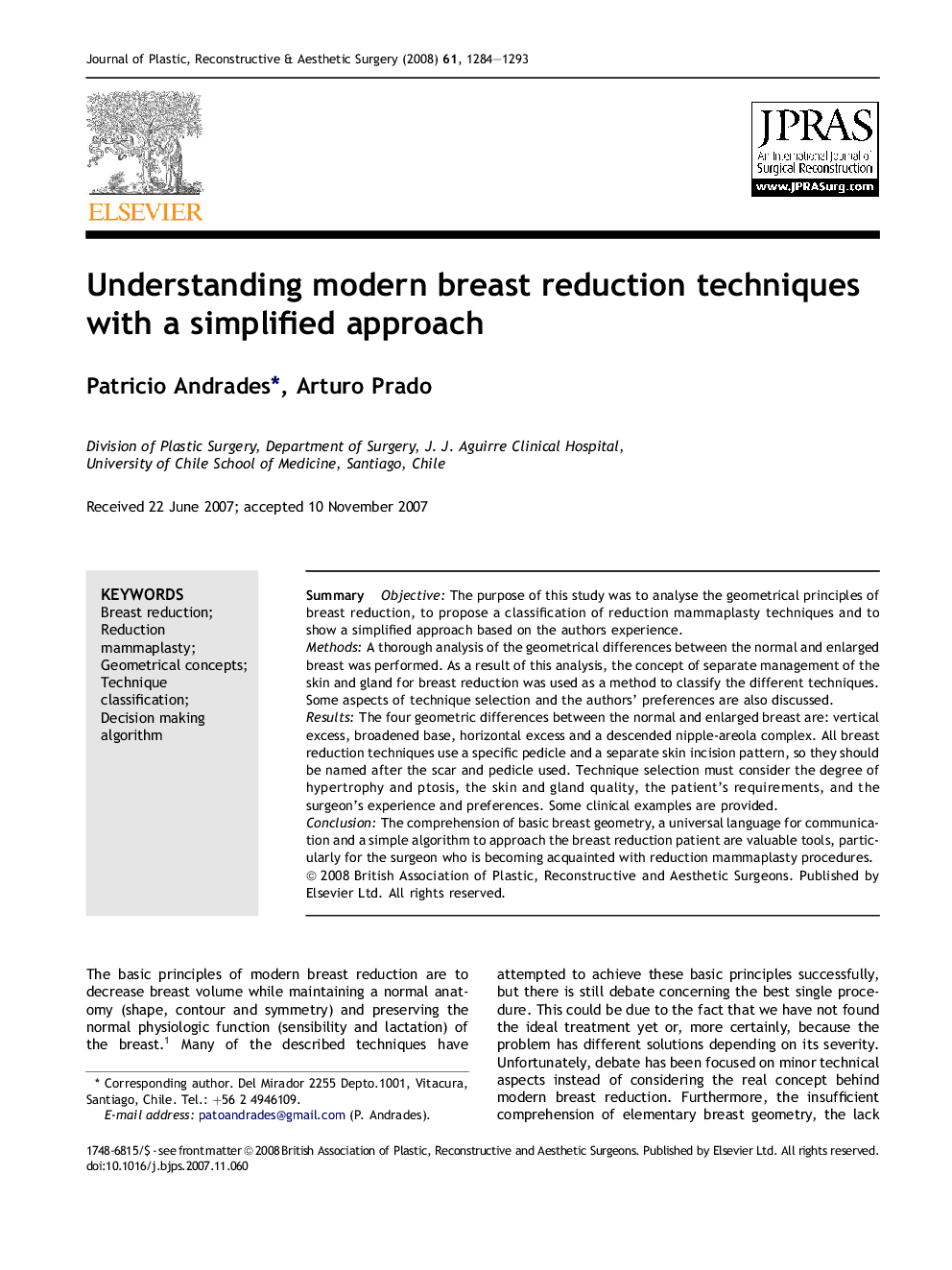| Article ID | Journal | Published Year | Pages | File Type |
|---|---|---|---|---|
| 4120528 | Journal of Plastic, Reconstructive & Aesthetic Surgery | 2008 | 10 Pages |
SummaryObjectiveThe purpose of this study was to analyse the geometrical principles of breast reduction, to propose a classification of reduction mammaplasty techniques and to show a simplified approach based on the authors experience.MethodsA thorough analysis of the geometrical differences between the normal and enlarged breast was performed. As a result of this analysis, the concept of separate management of the skin and gland for breast reduction was used as a method to classify the different techniques. Some aspects of technique selection and the authors' preferences are also discussed.ResultsThe four geometric differences between the normal and enlarged breast are: vertical excess, broadened base, horizontal excess and a descended nipple-areola complex. All breast reduction techniques use a specific pedicle and a separate skin incision pattern, so they should be named after the scar and pedicle used. Technique selection must consider the degree of hypertrophy and ptosis, the skin and gland quality, the patient's requirements, and the surgeon's experience and preferences. Some clinical examples are provided.ConclusionThe comprehension of basic breast geometry, a universal language for communication and a simple algorithm to approach the breast reduction patient are valuable tools, particularly for the surgeon who is becoming acquainted with reduction mammaplasty procedures.
